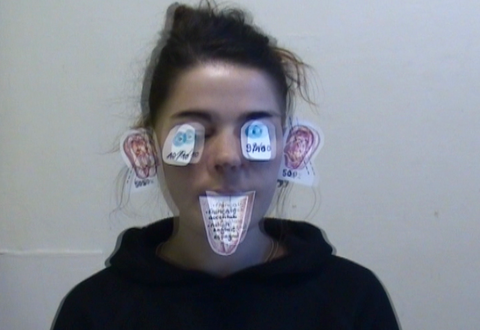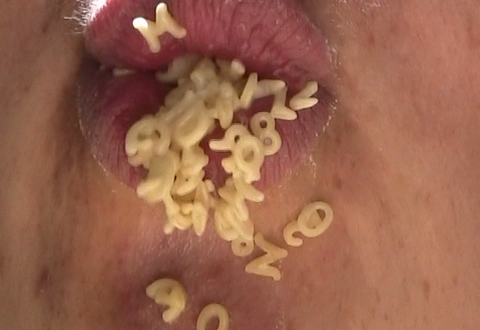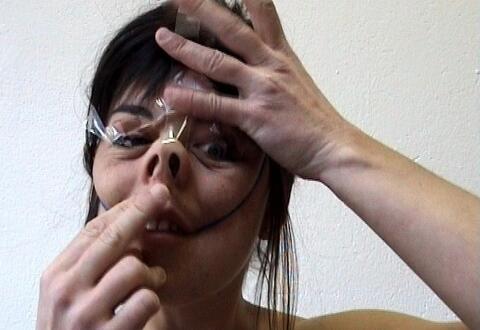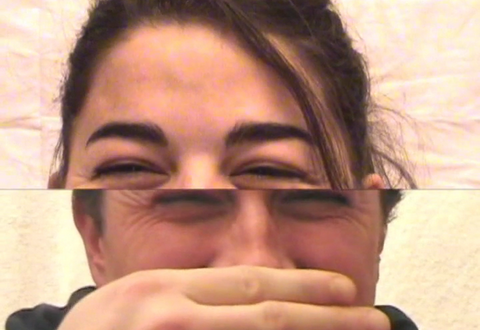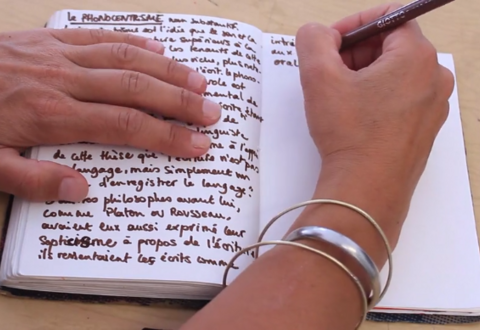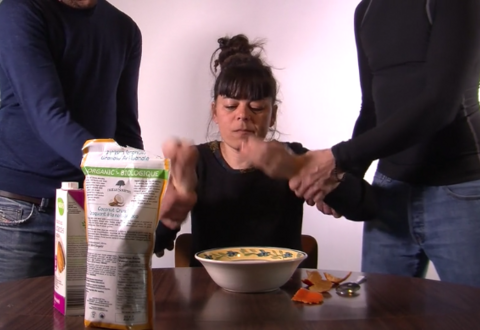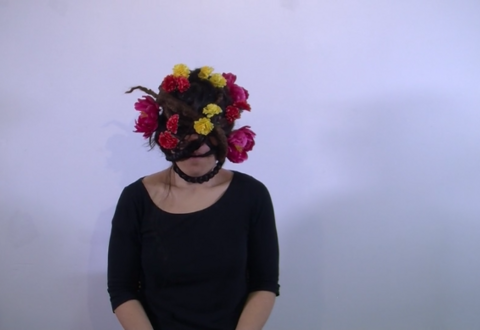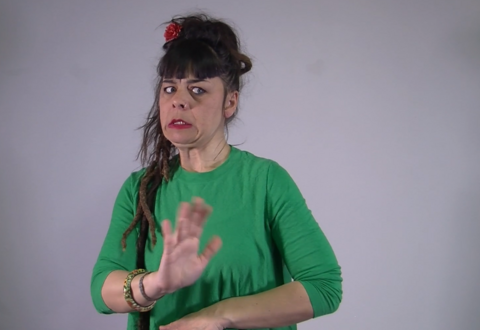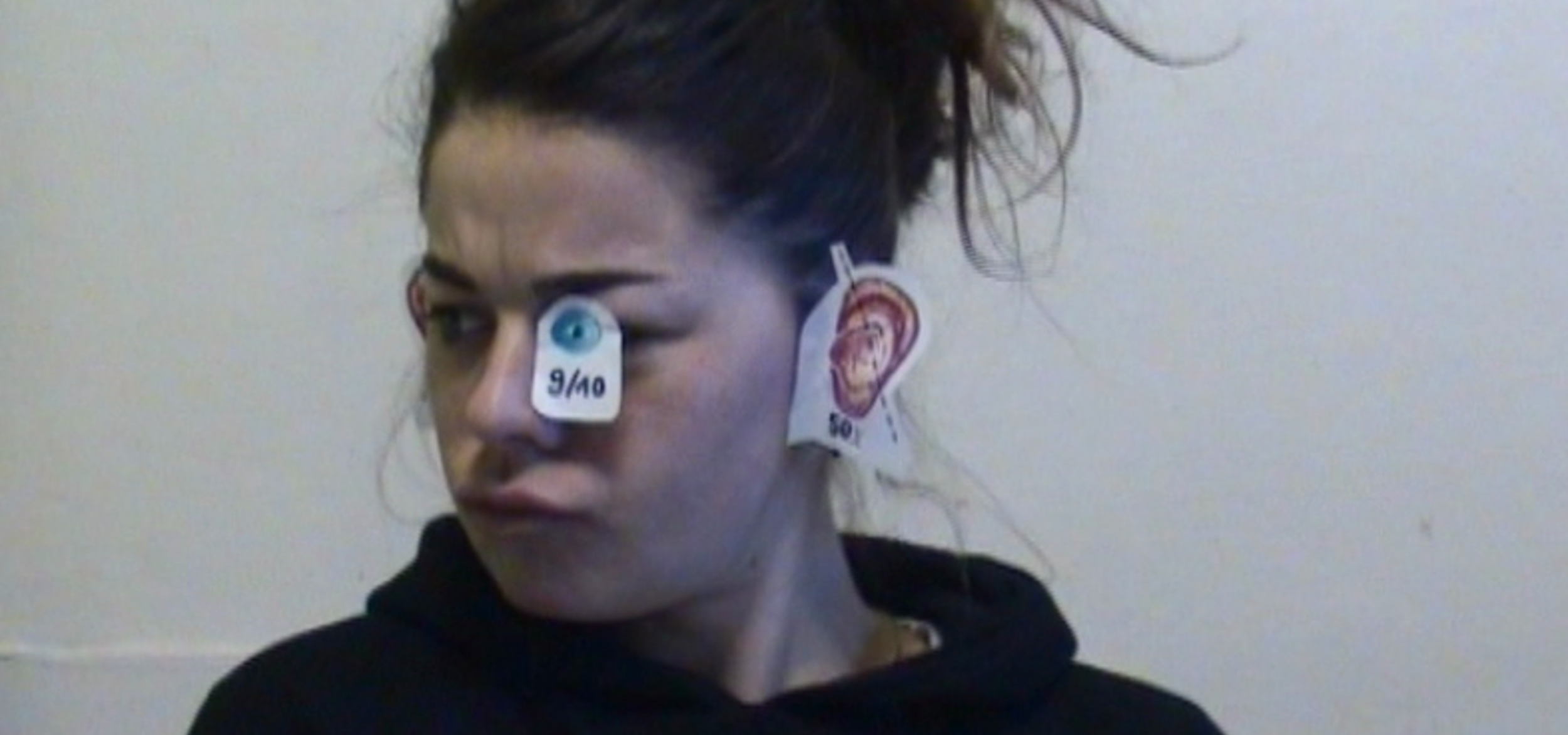
Sylvanie Tendron: Everyday obstacles
The tragicomic work of Deaf feminist artist Sylvanie Tendron.
Artist presentation.
List of works in program
Sylvanie Tendron: Everyday obstacles
In the spring of 2018, French videomaker Sylvanie Tendron was the first artist to undertake Vidéographe’s research residency for Deaf artists, curators and researchers.
Since 2004, Tendron has explored behaviors associated with language and communication. Drawing on her own daily experiences, she exposes, with humor and derision, the misunderstandings, obstacles and absurd situations that can arise through encounters of difference. In her performance videos she tries to overcome almost farcical difficulties that lead to isolation or confinement, in so doing illustrating numerous examples of situations in which we try to connect with others by adapting to their language. Tendron has carried out residencies and presented her work in Bolivia, Morocco, Vietnam, France and Quebec. She lives in Toulouse, France.
During the course of her residency at Vidéographe, the focus of Tendron’s video research and performative actions was the relationship between audism and feminism. She explored this relationship using a deconstructivist approach to phonocentrism as developed by Canadian Deaf artist Jolenta Lapiack, who has drawn on Jacques Derrida’s writings on the deconstruction of logocentrism to establish a causal relationship between phonocentrism and patriarchy. Her videos DrREAD, V. DESPENTES and Vampire domestique were realized during the course of this residency.
On 11 April 2018, she presented her work and videos at Dazibao, as part of the DV_VD series of screenings. This was her introduction:
A potted history
‘Sign Language is a complete language in its own right. You need to know that in Europe Sign Language was forbidden for 100 years following the Milan Congress of 1880. In 1980 came the Réveil Sourd [Deaf Awakening] in France. In the mid-1980s, a bilingual school spanning nursery to senior high opened in Toulouse. This National Education system for Sign Language still exists today and is the sole and most important in France. Many parents of deaf children have decided to educate their children there, and these deaf children have grown up to become, for example, psychologists, professional actors, school teachers, translators – the same as any hearing French citizen. This is not the case in other French cities, where the deaf have only ‘small’ jobs or are unemployed and receive a disability allowance (“Eat and keep quiet!”). In the United States, there is also a university for the deaf, Gallaudet University.
My practice
I studied at the École des Beaux-arts de Bordeaux. As part of this course, I carried out an exchange at UQAM (2005-2006). It was during this time that I stopped using my hearing aids, at first by accident, my earmold having broken, and then deliberately, as I mingled in the cultural crossroads of Montréal while awaiting funds to repair the device. During this time I asked myself, why did someone put these devices on my ears? So that I would fit in with the hearing norm? To satisfy and support the medical research carried out in an effort to ‘repair’ the ear? And yet, I have my own language (signing) and my own culture, just like an English, Japanese or South African person, just like you. I identify as a member of a linguistic minority and not as a person with a handicap. And so I hold on to the behaviors, misunderstandings and absurd situations that I encounter on a daily basis, and use them in performance videos. I make metaphors of them, creating obstacles and attempting to overcome them with humor, mockery, self-deprecation and burlesque. They are about adapting language in order to connect to other people.’ -Sylvanie Tendron
Translation: Sarah Knight
Image: Sylvanie Tendron, Entraves quotidiennes, 2006






